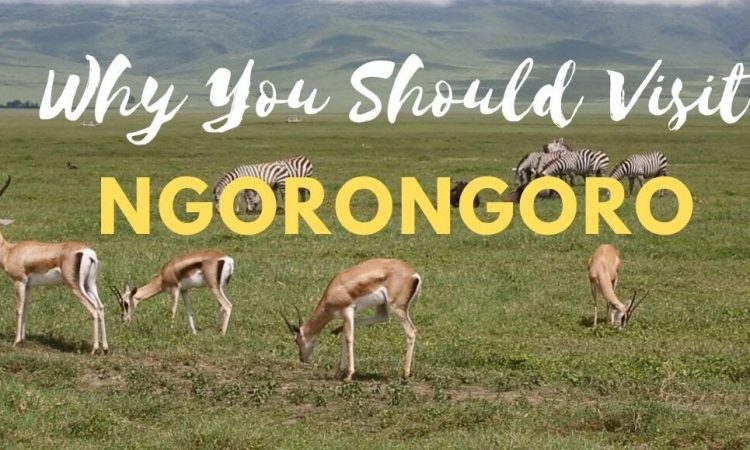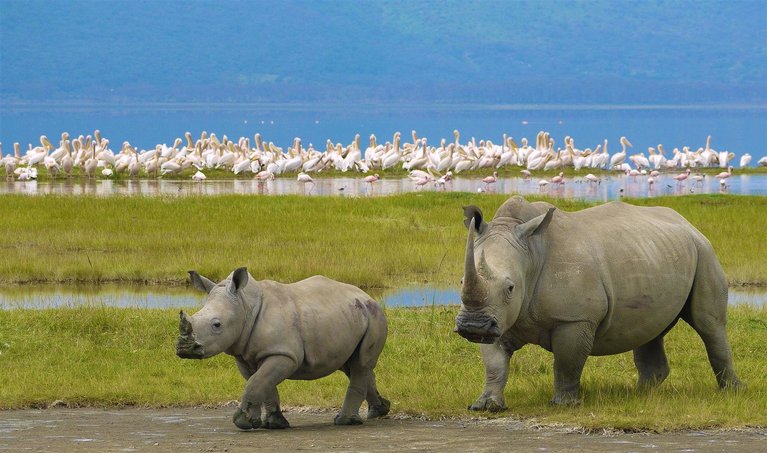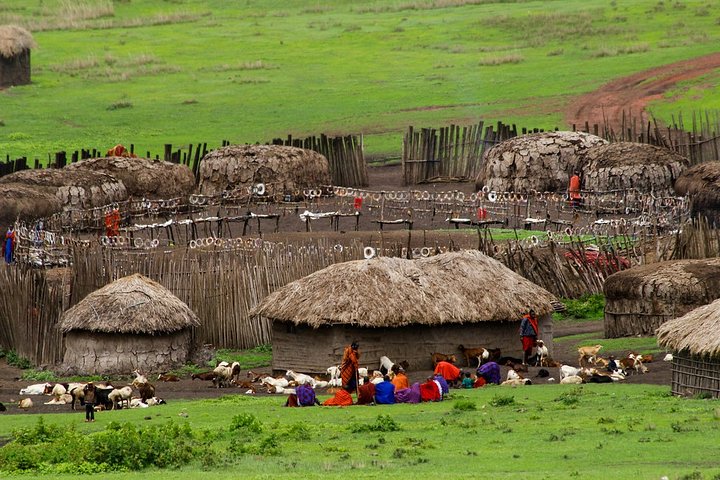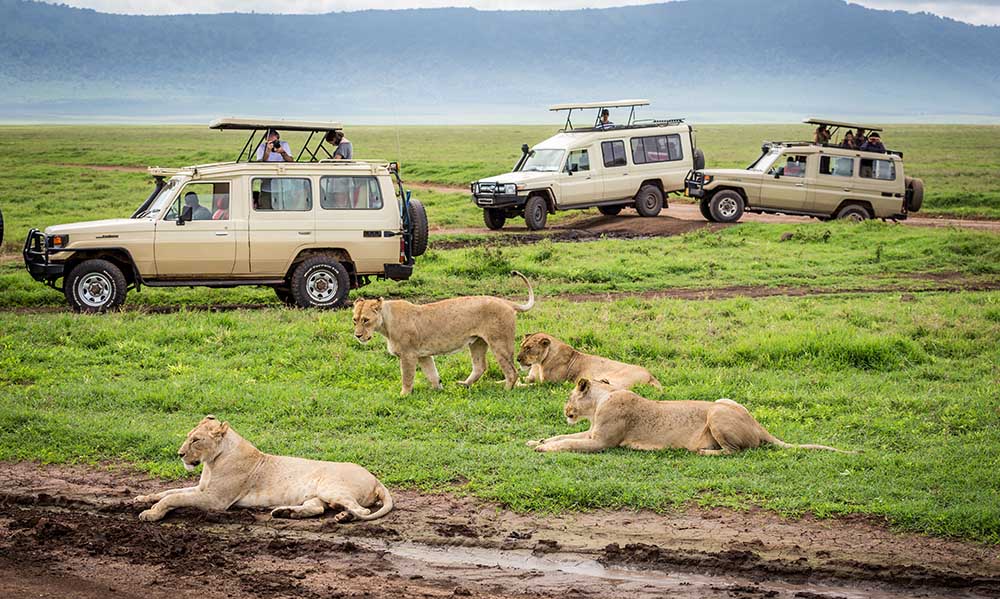Why Ngorongoro Conservation Area is a must Visit Safari Destination in Tanzania? Serengeti National Park is often the first place that people think of when planning a bucket-list journey in Tanzania. Sure, there’s the Great Migration, endless plain and the Lion King setting, both of which are wonderful reasons to visit the Serengeti. However, Tanzania has a lot more to offer aside from Serengeti, and it would be a shame to miss out on it especially the world-famous Ngorongoro Conservation Area.

The enormous, verdant Ngorongoro conservation area and crater in Tanzania is one of the continent’s most recognized natural beauties, earning the label of “Africa’s Eden.” It’s also one of the most popular luxury safari locations, having terrain, wildlife concentration, and historical significance that are genuinely unique. Here are just a few reasons why the Ngorongoro Conservational Area is a must-see tourist attraction and why you should consider visiting it on your next safari.
A World Heritage Site
Any ardent traveler would like to visit as many World Heritage Sites as possible, particularly if the location offers an adventure beyond their wildest fantasies. That kind of location is the Ngorongoro Conservation Area, which has been a UNESCO World Heritage Site since 1979. Its most impressive feature is the Ngorongoro Crater, which is known for being the world’s biggest inactive and undamaged volcanic caldera. The Crater, which was formed by a massive explosion and collapse some 2 to 3 million years ago, was named one of Africa’s Seven Natural Wonders in 2015. It’s also known as “the cradle of humanity” by some.
The Ngorongoro Conservation Area is definitely more than meets the eye, with a diverse spectrum of globally threatened species and dense wildlife. It has also been one of the most important archaeological research centers for more than 80 years, as it contains important evidence of human evolution and human-environment interactions making it a top tourism destination and reason of why you should never miss visiting it in your Africa-Tanzania safari.

Africa’s Garden of Eden
When most people hear “Ngorongoro Conservation Area,” they immediately think of the world-famous Ngorongoro Crater. And we can’t say we blame you for it. The Ngorongoro Crater, Africa’s Garden of Eden, is home to over 25,000 creatures, including ungulates, four of the Big Five, and other large mammals. It’s also a great area to see critically endangered species, including black rhinos, golden cats, and wild hunting dogs. The Ngorongoro Crater ensures an action-packed, heart-pounding game since it is home to one of the densest known populations of Maasai lions.
In fact, the Great Movement-the world’s largest animal migration, is supported by it. The wildebeest calving season takes place in the Ngorongoro Crater and the Ndutu area. Thousands of newborn wildebeests will be born during this time, as well as a slew of opportunistic predators in stealth and killing modes. The beauty of this natural wonder has led some to compare it to “a little Africa in a bowl.” One traveler said, “Imagine a bowl of a beautiful landscape filled with just about every African animal you can think of.”
Maasai cultural boma
Not only is Africa’s Garden of Eden known for having the largest populations of wildlife, but it also hosts locals who live peacefully among deadly animals like lions and leopards. It may be difficult to believe me when I explain that humans live peacefully alongside wildlife in the Ngorongoro conservation area, but this must be one of the reasons why you should never miss visiting Ngorongoro and seeing this natural beauty.
The Maasai tribe were the first people to live in this area. In fact, the word “Ngorongoro” means “gift of life” in Swahili. They are undoubtedly the most well-known indigenous tribe in the east, and a visit to their village is unquestionably worthwhile. Today, some 100,000 Maasai reside in the reserve area, tending to their livestock without endangering wildlife. At designated sites known as “cultural bomas,” visitors to the Ngorongoro Conservation Area can learn about Maasai culture, take photographs, and purchase original Maasai handicrafts.

Olduvai Gorge
Olduvai Gorge is the location to visit whether you enjoy archaeology or simply want to study key paleontological data relating to human evolution. It’s one of the world’s most important paleoanthropological sites, and it helps us comprehend early human evolution. The Olduvai Gorge is one of the world’s most important fossil sites. The gorge is part of the Ngorongoro Conservation Area, which is almost thirty miles long and roughly three hundred feet deep. It is well known for discovering some of the earliest evidence of human development through evolutionary research.
Birding paradise
It is not only noted for having enormous populations of large and small mammals, but it is also an excellent safari area for birdwatching, making it one of Tanzania’s must-see safari destinations. With over 500 species documented, both the Ngorongoro highlands and the crater offer superb birding opportunities. The highland forest has a diverse and intriguing birdlife. The white-eyed slaty flycatcher and the Livingstone turaco are among the species to be observed. The crater is home to a variety of specialist grassland birds, Why Ngorongoro Conservation Area is a must Visit Safari Destination in Tanzania?.
Outstanding sunrise and sunset
The transition between day and night is a great time to see wildlife and watch their behavior. Have we mentioned how lovely the sunsets and sunrises are? The Ngorongoro Crater has a rich terrain with jungles running along its rim. If you stand or stay near the crater rim early in the morning, you can experience the spectacular movement of the sun as it rises and slowly touches the green grasses of the savannah. You may watch the golden hour and see one of the most beautiful sunsets of your life if you stay until the sun sets in the middle of the afternoon. This beautiful and romantic experience to be enjoyed by your beloved one is another reason that makes Ngorongoro conservation area a must-visit safari destination.
Its location
The Ngorongoro Conservation Area’s northern portion shares borders with Africa’s most famous park, Serengeti National Park. The Serengeti is the most popular tourist destination in Tanzania. Apart from being so near to the Serengeti, Ngorongoro also offers a Tanzanian perspective that rivals that of the Serengeti’s. If lodging is not an issue, a visit to the conservation area is simply extremely easy and time-saving.

Not only is the Ngorongoro close to the Serengeti, but it is also close to other famous national parks in Tanzania, such as the Lake Manyara national park, which is known for its tree-climbing lions and is an ideal park for canoeing safari experiences, and the Tarangire national park, which is known for hosting large herds of elephants as well as giant baobab trees. Because it is so close to the three parks, it is simple to connect and combine your safari schedule by visiting them.
Highly accessible
Another reason to visiting the Ngorongoro Conservation Area is that it is easily accessible, making it a perfect safari destination. The Ngorongoro Conservation Area is very close to Arusha, Tanzania’s northern safari circuit’s primary safari hub. If you wish to drive down to Ngorongoro, it will only take you 3 hours from Arusha, so anyone on a tight schedule will appreciate this. The park also boasts some of the best airstrips, making it easily accessible by air from everywhere in Tanzania.
It’s also adjacent to the Serengeti National Park and Lake Manyara National Park, which are both popular tourist destinations. If you want a stress-free vacation, check out these incredible Ngorongoro Crater Safari tours. You will never be sorry.


